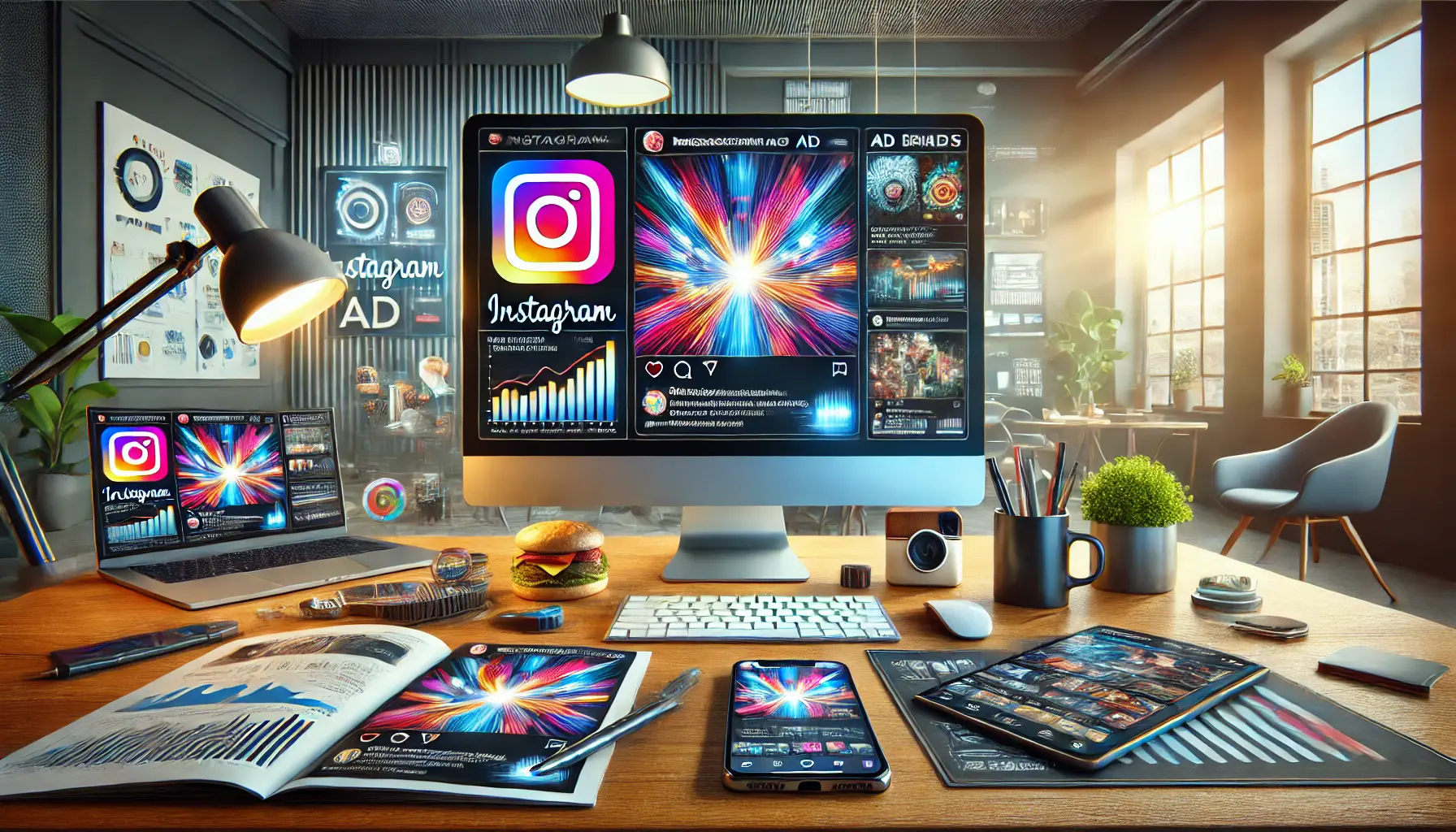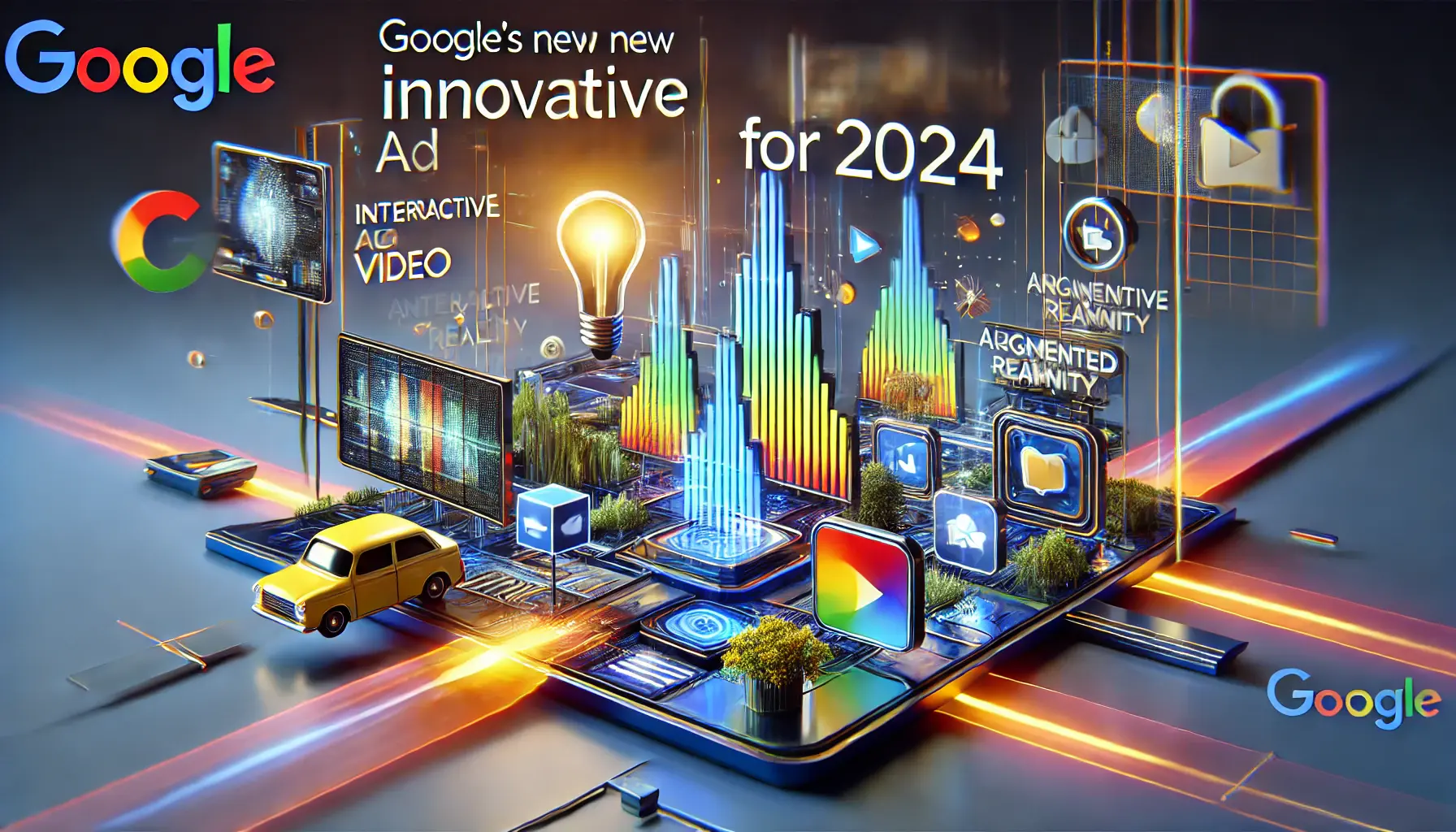Exploring the realm of social media advertising reveals a dynamic and ever-evolving landscape, where innovation is not just a buzzword but a necessity for brands seeking to make a lasting impact.
The concept of ‘Ad Innovation’ in social media ads is a testament to the creative and technological advancements that are reshaping the way brands engage with their audience.
This article delves into the various facets of ad innovation, offering insights into the strategies that are setting new benchmarks in the world of social media advertising.
As we navigate through the intricacies of ad innovation, it becomes evident that this is not just about flashy visuals or catchy slogans.
It’s a deeper dive into understanding audience behavior, leveraging cutting-edge technology, and crafting messages that resonate on a personal level.
The goal is to create ads that are not only seen but felt, leading to a meaningful connection between the brand and its audience.
- Understanding the Landscape of Social Media Ads
- Strategies for Effective Ad Targeting
- Innovative Content Formats in Social Ads
- Leveraging Technology for Ad Personalization
- Measuring and Analyzing Ad Performance
- Future Trends and Predictions in Social Media Advertising
- Embracing the Future of Ad Innovation in Social Media Advertising
- Ad Innovation in Social Media Ads: FAQs
Understanding the Landscape of Social Media Ads
The landscape of social media advertising is as diverse as it is dynamic.
With platforms like Facebook, Instagram, TikTok, and LinkedIn, each offering unique formats and audience engagement opportunities, advertisers must navigate a complex ecosystem.
The key to success lies in understanding the nuances of each platform, tailoring content to fit the specific context and audience behavior prevalent on each.
For instance, Instagram’s visually rich environment calls for high-quality imagery and storytelling, while LinkedIn’s professional network demands more informative and value-driven content.
Recognizing these differences is crucial for advertisers to effectively communicate their message and engage with their target audience.
Emerging Trends in Social Media Advertising
Recent years have seen a surge in innovative trends within social media advertising.
Interactive ads, AR experiences, and personalized storytelling are just the tip of the iceberg.
These trends are not just about grabbing attention; they’re about creating immersive experiences that engage users in a more meaningful way.
For example, AR filters on Instagram and Snapchat have opened new avenues for brands to offer interactive experiences.
These filters, often fun and engaging, allow users to interact with the brand in a novel way, creating a memorable impression that goes beyond traditional advertising.
Key Point: Ad innovation in social media is about understanding platform-specific nuances and leveraging emerging trends to create more engaging and immersive experiences.
Strategies for Effective Ad Targeting
Effective ad targeting in social media is a blend of art and science.
It requires a deep understanding of your audience’s preferences, behaviors, and needs.
The goal is to deliver content that resonates with the audience, ensuring that your message reaches the right people at the right time.
One of the most crucial aspects of ad targeting is the use of data analytics.
By analyzing user data, advertisers can create highly targeted campaigns that speak directly to the interests and needs of their audience.
This approach not only improves engagement rates but also enhances the overall effectiveness of the ad campaign.
Key Elements of Ad Targeting
- Demographic Targeting: This involves segmenting the audience based on age, gender, location, and other demographic factors.
- Behavioral Targeting: Focusing on user behavior, such as previous purchases, website visits, and interactions with other ads.
- Interest-Based Targeting: Leveraging user interests, hobbies, and preferences to create more relevant ad content.
- Retargeting: Targeting users who have previously interacted with your brand but have not converted, encouraging them to take action.
Each of these targeting methods has its unique advantages and can be used in combination to create a comprehensive ad strategy.
For instance, combining demographic targeting with interest-based targeting can lead to highly personalized ad experiences that are more likely to engage and convert.
Idea: Combining various targeting methods can lead to more personalized and effective ad campaigns, enhancing user engagement and conversion rates.
Innovative Content Formats in Social Ads
The world of social media ads is constantly evolving, with innovative content formats emerging as powerful tools for engagement.
These formats go beyond traditional text and image ads, offering interactive and immersive experiences that capture the audience’s attention and foster deeper connections.
Understanding and leveraging these innovative formats is crucial for advertisers aiming to stand out in the crowded social media space.
Here’s a look at some of the most impactful content formats currently shaping the landscape of social media advertising:
Interactive and Immersive Ad Formats
- Video Ads: Short-form videos have become a staple in social media advertising, offering dynamic and engaging content that resonates with the audience.
- Augmented Reality (AR) Ads: These ads provide interactive experiences, allowing users to engage with products or features in a virtual space.
- Carousel Ads: A series of images or videos that users can swipe through, offering a more engaging storytelling format.
- Story Ads: Full-screen vertical ads that appear within social media stories, providing a more immersive experience.
Each of these formats offers unique opportunities for creativity and engagement.
For example, AR ads can create memorable experiences that encourage users to interact with the brand in a fun and engaging way.
Similarly, video ads can convey a story or message in a concise and visually appealing manner, making them highly effective for capturing audience attention.
Note: Embracing innovative ad formats like AR, video, and carousel ads can significantly enhance the engagement and effectiveness of social media campaigns.
Leveraging Technology for Ad Personalization
In the realm of social media advertising, personalization is the key to creating ads that resonate with the audience.
Leveraging technology to tailor ads to individual preferences and behaviors can significantly enhance the effectiveness of a campaign.
This approach not only improves user engagement but also fosters a sense of connection between the brand and its audience.
Advancements in AI and machine learning have opened new doors for ad personalization, allowing advertisers to create highly targeted and relevant ad experiences.
Here’s how technology is being used to personalize ads:
Technological Tools for Personalized Ads
- AI-Powered Algorithms: These algorithms analyze user data to predict preferences and behaviors, enabling the creation of tailored ad content.
- Machine Learning: This technology learns from user interactions, continuously improving the relevance and effectiveness of ads over time.
- Data Analytics: Analyzing user data helps in understanding audience segments, enabling advertisers to create more targeted campaigns.
- Dynamic Creative Optimization (DCO): DCO uses real-time data to automatically adjust ad content, ensuring maximum relevance and engagement.
By integrating these technologies into their advertising strategies, brands can deliver more personalized and impactful ad experiences.
For instance, AI algorithms can help in creating ads that resonate with individual users based on their past interactions and preferences, leading to higher engagement and conversion rates.
Truth: The integration of AI, machine learning, and data analytics in ad personalization significantly enhances the relevance and impact of social media ads.
Measuring and Analyzing Ad Performance
Measuring and analyzing the performance of social media ads is crucial for understanding their impact and optimizing future campaigns.
With the vast amount of data available, advertisers can gain deep insights into how their ads are performing and make data-driven decisions to improve their strategies.
Key performance indicators (KPIs) such as engagement rates, click-through rates, conversion rates, and return on ad spend (ROAS) are essential metrics to track.
These metrics provide valuable information on the effectiveness of ad campaigns and guide advertisers in refining their approaches.
Tools and Techniques for Ad Analysis
- Social Media Analytics: Platforms like Facebook, Instagram, and LinkedIn offer built-in analytics tools to track ad performance.
- Third-Party Analytics Tools: These tools provide more in-depth analysis and insights into ad performance across multiple platforms.
- A/B Testing: Testing different versions of ads to determine which elements resonate best with the audience.
- User Feedback: Gathering feedback from the audience can provide qualitative insights into the ad’s impact and areas for improvement.
For example, A/B testing can reveal which ad creatives, messages, or formats are more effective in engaging the audience.
Similarly, analyzing user feedback can provide insights into how the ads are perceived and what emotional impact they have on the audience.
Featured Info: Utilizing a combination of analytics tools and techniques like A/B testing and user feedback is essential for measuring and optimizing the performance of social media ads.
Future Trends and Predictions in Social Media Advertising
The future of social media advertising is poised to be shaped by continuous innovation and technological advancements.
As we look ahead, it’s important to anticipate and prepare for the trends that will define the landscape of social media ads.
Staying ahead of these trends will be crucial for advertisers seeking to maintain a competitive edge and effectively engage with their audience.
Emerging technologies like AI, AR, and VR, along with evolving user behaviors and preferences, are set to play a significant role in shaping future ad strategies.
Here’s a glimpse into what we can expect in the near future:
Emerging Trends in Social Media Advertising
- Increased Use of AI and Machine Learning: These technologies will continue to revolutionize ad personalization and targeting.
- Growth of AR and VR Experiences: Augmented and virtual reality will offer more immersive and interactive ad experiences.
- Focus on Authenticity and Transparency: Brands will emphasize genuine, transparent communication to build trust with their audience.
- Integration of E-commerce: Social media platforms will further integrate shopping features, blurring the lines between advertising and e-commerce.
For instance, the integration of e-commerce into social media platforms will enable brands to create seamless shopping experiences within their ads, making it easier for users to purchase products directly from the ad itself.
Additionally, the increased use of AI and machine learning will allow for even more sophisticated targeting and personalization, making ads more relevant and effective.
Idea: Staying abreast of emerging trends like AI, AR, VR, and e-commerce integration will be key for advertisers to create effective and engaging social media ads in the future.
Embracing the Future of Ad Innovation in Social Media Advertising
As we conclude our exploration of ad innovation in social media advertising, it’s clear that this field is not just rapidly evolving but is also at the forefront of digital marketing transformation.
The journey through various aspects of social media ads—from understanding the landscape, leveraging technology for personalization, to predicting future trends—highlights the multifaceted nature of this domain.
Advertisers who embrace these changes and innovations are poised to not only succeed but also to redefine the standards of digital engagement.
Key Takeaways for Advertisers
Advertisers looking to excel in the dynamic world of social media advertising should consider the following key takeaways:
- Stay informed about the latest trends and technological advancements in social media advertising.
- Utilize data-driven strategies for effective ad targeting and personalization.
- Experiment with innovative ad formats to enhance user engagement and experience.
- Measure and analyze ad performance to continually optimize strategies.
- Anticipate future trends and adapt strategies accordingly to maintain relevance and effectiveness.
Ad innovation in social media ads is not just about adopting new technologies or trends; it’s about understanding and responding to the evolving needs and behaviors of the audience.
It requires a balance of creativity, strategic thinking, and technological prowess.
As we move forward, the brands that will stand out are those that not only adapt to these changes but also anticipate and shape them.
Final Thoughts on Ad Innovation
In conclusion, the landscape of social media advertising is one of endless possibilities and continuous evolution.
Ad innovation remains a critical component for brands aiming to connect with their audience in meaningful ways.
By embracing the trends, technologies, and strategies discussed, advertisers can create impactful, engaging, and successful social media ad campaigns that resonate with their audience and drive results.
The future of social media advertising is bright, and it is those who innovate and adapt who will lead the way.
Enjoyed the article? Let its author handle your social media ads. Visit our service page to get started!
Ad Innovation in Social Media Ads: FAQs
Delving into the world of social media advertising, here are some frequently asked questions that shed light on the nuances and strategies of ad innovation in this dynamic field.
Recent trends include interactive AR ads, personalized storytelling, dynamic creatives, and short-form video content for enhanced user engagement.
Social media advertising helps expand audience reach, strengthen brand recognition, and enhance conversion rates, driving overall business growth.
Yes, AI algorithms analyze user data to predict preferences, enabling highly targeted and relevant ad content for improved engagement.
AR in ads offers interactive experiences, allowing users to engage with products in a virtual space, creating memorable brand interactions.
Video content is crucial, offering dynamic and engaging storytelling that resonates well with audiences on social media platforms.
Effective strategies include demographic, behavioral, and interest-based targeting, along with retargeting for personalized ad experiences.
Performance is measured using KPIs like engagement rates, click-through rates, conversion rates, and return on ad spend (ROAS).
Future trends include further AI integration, growth in AR/VR experiences, a focus on authenticity, and e-commerce integration in ads.










